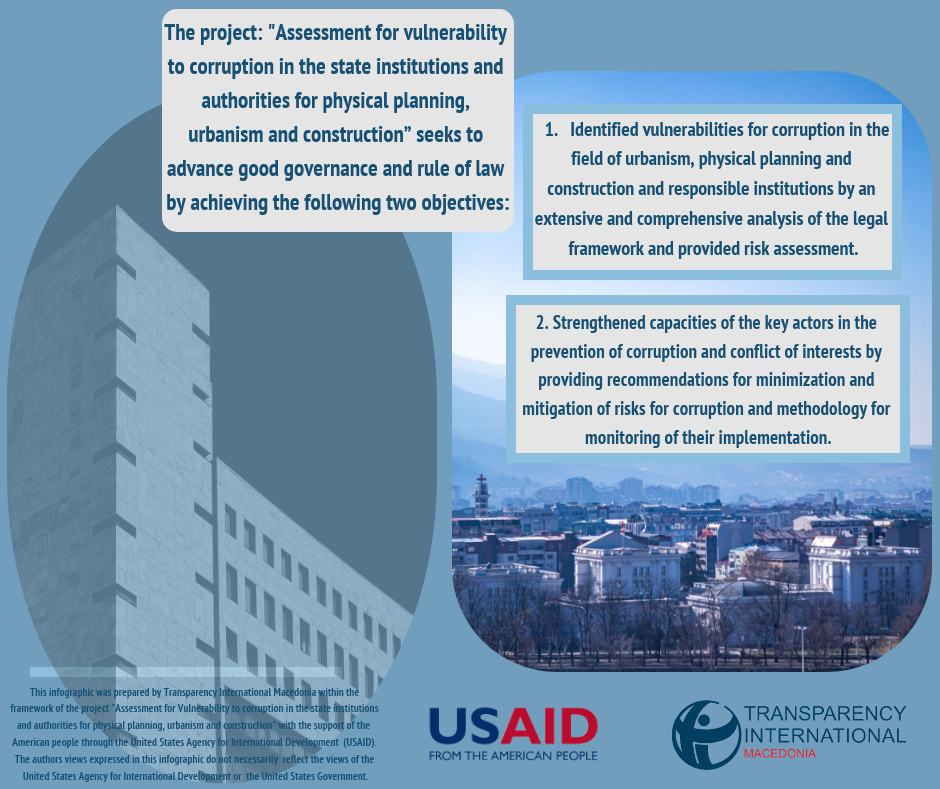Period of implementation: 08 February 2021 – 31 December 2021
Donor: Supported by the USAID Civic Engagement Project
Background
Transparency International – Macedonia in their previous work for the needs of the State Commission for Prevention of Corruption assessed that one of the sectors that are the most vulnerable to corruption and conflict of interest in the country is the sector of urbanism, physical planning and construction.
As a follow up and based on previous assessment in partnership with the EWMI office in Skopje, Transparency International – Macedonia (TI-M) will conduct a comprehensive and methodological risk assessment for vulnerability to corruption in the state institutions and authorities for physical planning, urbanism and construction.
The activities based on previously developed methodology will comprised by:
- Desk research and analysis of the legal framework in this areas (laws and bylaws);
- Analysis of the decision – making processes in the institutions responsible for this area
- Analysis of the existing and control mechanisms applicable;
- Interviews with stakeholders and employees to assess their needs and opinions on the legal framework and procedures;
- Assessment of the vulnerabilities separately in physical planning, urbanism and construction;
- Provision of the final report with recommendations and methodology for monitoring the status of their implementation.
Objectives
More specifically, the activity “Assessment for vulnerability to corruption in the state institutions and authorities for physical planning, urbanism and construction” seeks to advance good governance and rule of law by achieving the following two objectives: (1) identified vulnerabilities for corruption in the field of urbanism, physical planning and construction and responsible institutions by an extensive and comprehensive analysis of the legal framework and provided risk assessment; and (2) strengthened capacities of the key actors in the prevention of corruption and conflict of interests by providing recommendations for minimization and mitigation of risks for corruption and methodology for monitoring of their implementation.


